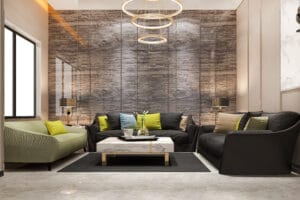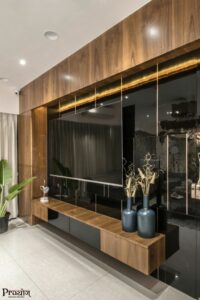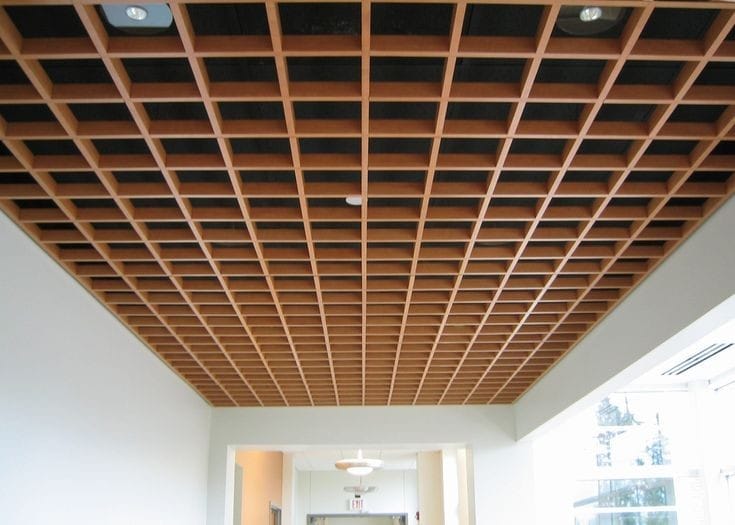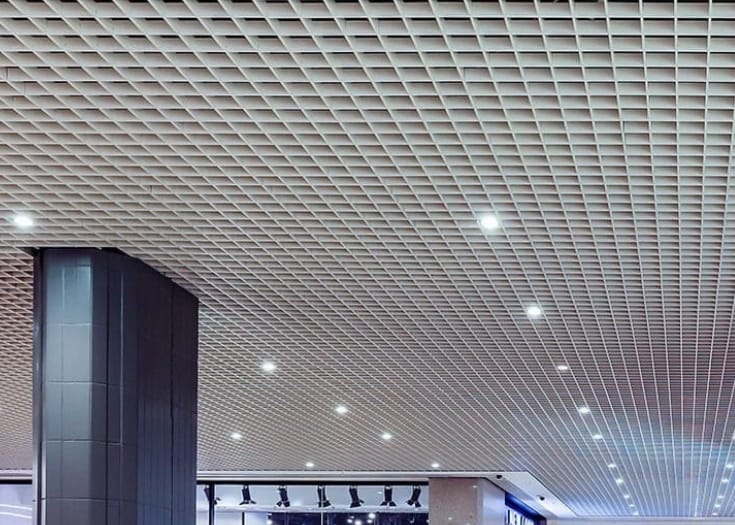Designing a Minimalist Interior for Timeless Elegance
Introduction
The world of minimalist interior design, where less is more, is here! Minimalism is all about living with the essentials and eliminating clutter. It’s not just a decor aesthetic but a way of life that brings peace and serenity to your home. A space with clean lines, neutral colors, and minimal furniture is called a minimalist interior. It promotes simplicity and functionality over extravagance and unnecessary decor. Minimalism is perfect for those who want simple yet elegant home decor that stands the test of time. The key elements of a minimalist interior include simplicity, functionality, and minimalism. The design emphasizes functionality while still maintaining aesthetic appeal. A structured organization helps in the proper utilization of the available space. Minimalism helps with decluttering and creating a neat and calm environment.
Choosing a color palette
Picking a variety range assumes an urgent part in accomplishing a moderate interior. Colors like beige, white, and gray, which are considered neutrals, can contribute to the creation of an atmosphere that is at ease and peaceful. They also provide a versatile canvas, making switching up decor and accent pieces easy. Monochromatic color schemes can add depth to a room while remaining within the minimalist aesthetic. For example, a gray color palette can include various shades and textures of gray to create interest. Pops of color can make a room stand out without appearing cluttered. Incorporating a few colorful accent pieces, like a bright yellow chair or a vibrant piece of artwork, can add an unexpected element of excitement to a minimalist space. Remember, Minimalism doesn’t have to be bland! Experiment with different shades and textures to see what works best for your space.


Less is more: Decluttering and organizing
Do you sometimes feel too weighed down by all the stuff you have at home? You’re not alone, so don’t worry! It’s a fact that clutter can impair thinking. It can lead to feelings of stress and anxiety and even make it harder to focus on the things that matter most. That’s why one of the key elements of a minimalist interior is decluttering and organizing. And no, it’s not just about throwing things away. Being deliberate with the possessions you decide to keep is important, as is making sure that everything has a home. If decluttering sounds daunting, don’t worry. Plenty of tips and tricks can make the process a little less overwhelming.
Start by tackling one space at a time, and be sure to have boxes or bags on hand for items you want to donate or sell. And remember, just because you’ve held onto something for a long time doesn’t necessarily mean it has value in your life today. Additionally, organizing options can significantly alter the way your home feels and looks in general. Consider investing in storage solutions that are equal parts functional and stylish, like floating shelves or decorative baskets. By decluttering and organizing, you’ll be well on your way to achieving a minimalist interior that promotes calm and clarity.
Furniture and decor
When designing a minimalist interior, quality should always triumph over quantity. Limiting the number of furniture pieces and decorations to only what is necessary creates a clean and serene environment, allowing each piece to stand out on its own. Opting for high-quality furniture ensures longevity and timelessness. Steer clear of the trends; instead, invest in statement pieces that serve dual functions, such as a unique coffee table or a multi-storage media console. Texture and materials play a vital role in creating depth and warmth in the space.
triumph over quantity. Limiting the number of furniture pieces and decorations to only what is necessary creates a clean and serene environment, allowing each piece to stand out on its own. Opting for high-quality furniture ensures longevity and timelessness. Steer clear of the trends; instead, invest in statement pieces that serve dual functions, such as a unique coffee table or a multi-storage media console. Texture and materials play a vital role in creating depth and warmth in the space.
Incorporating different textures, such as natural fibers, woven materials, and plush fabrics, adds a layer of visual interest. Experiment with textures and materials to bring a sense of balance and contrast to the space. When done correctly, minimalist interiors exude elegance and sophistication. Be mindful of every piece that is being added to space; question if it holds a purpose and adds value to space. Remember to keep it simple but striking.
Lighting
Lighting plays a crucial role in a minimalist interior, as it highlights the key design elements while creating a warm and inviting ambiance. Natural lighting should always be maximized, emphasizing large windows and open spaces. Layered lighting, including overhead, task, and ambient lighting, can create depth and enhance the aesthetic appeal of a space. Accent lighting can be used sparingly to draw attention to specific decor elements. Keep in mind that when it comes to lighting, less is more. Too many lights can disrupt the flow of a room, and harsh lighting can ruin the effect of a minimalist design. So, choose carefully and wisely!
Finishing touches
Less is more when it comes to finishing touches in a minimalist interior. Plants and botanicals can add a fresh burst of greenery without cluttering the space, while artwork and decorations should be chosen with a thoughtful eye for quality and significance. Incorporating personal style can be achieved through carefully selected statement pieces or items of sentimental value, but be mindful not to overdo it. Remember, minimalism aims to create a timeless elegance that can stand the test of time. So, choose your finishing touches wisely and let them add the perfect final touch to your beautiful minimalist interior.
Conclusion
Minimalism is a surefire way to create a timeless and elegant interior. By decluttering, organizing, and choosing quality pieces, the appeal of minimalist design never fades. Achieve sophistication by incorporating personalized touches, accent lighting, and stylish artwork.








 a cozy living room area, and position your dining table and chairs in another area of the room.
a cozy living room area, and position your dining table and chairs in another area of the room. One of the keys to making an open-plan space feel inviting and intimate is to incorporate cozy textures and finishes, such as plush rugs, soft throws, and warm lighting. Adding personal touches, such as artwork and family photos, can also help to create a sense of warmth and personality in an open space. Smart furniture arrangements are also essential in open-plan living. For example, using a large area rug can help to anchor a seating area and create a visual separation between different zones. Similarly, using bookcases or screens can help to define spaces while still maintaining an open feel.
One of the keys to making an open-plan space feel inviting and intimate is to incorporate cozy textures and finishes, such as plush rugs, soft throws, and warm lighting. Adding personal touches, such as artwork and family photos, can also help to create a sense of warmth and personality in an open space. Smart furniture arrangements are also essential in open-plan living. For example, using a large area rug can help to anchor a seating area and create a visual separation between different zones. Similarly, using bookcases or screens can help to define spaces while still maintaining an open feel.
 Interior design has always been an important aspect of creating a comfortable and functional living space. However, with the changing times and the advent of technology, interior design is taking on a whole new meaning. In 2023, interior designing will be more than just enhancing the aesthetics of your home. It will be about creating a living space that is in tune with your lifestyle and needs.
Interior design has always been an important aspect of creating a comfortable and functional living space. However, with the changing times and the advent of technology, interior design is taking on a whole new meaning. In 2023, interior designing will be more than just enhancing the aesthetics of your home. It will be about creating a living space that is in tune with your lifestyle and needs. Interior design is changing the way we live in 2023. With sustainable designs, smart homes, and wellness spaces, interior designing is no longer just about aesthetics, but also about creating a living space that is in tune with your lifestyle and needs. At NexG Interiors, we understand the importance of interior design in creating a comfortable and functional living space. Our team of expert interior designers works closely with you to create a customized plan that meets your unique needs and preferences. Contact us today to transform your home into a beautiful and functional living space that is in tune with your lifestyle.
Interior design is changing the way we live in 2023. With sustainable designs, smart homes, and wellness spaces, interior designing is no longer just about aesthetics, but also about creating a living space that is in tune with your lifestyle and needs. At NexG Interiors, we understand the importance of interior design in creating a comfortable and functional living space. Our team of expert interior designers works closely with you to create a customized plan that meets your unique needs and preferences. Contact us today to transform your home into a beautiful and functional living space that is in tune with your lifestyle.





























